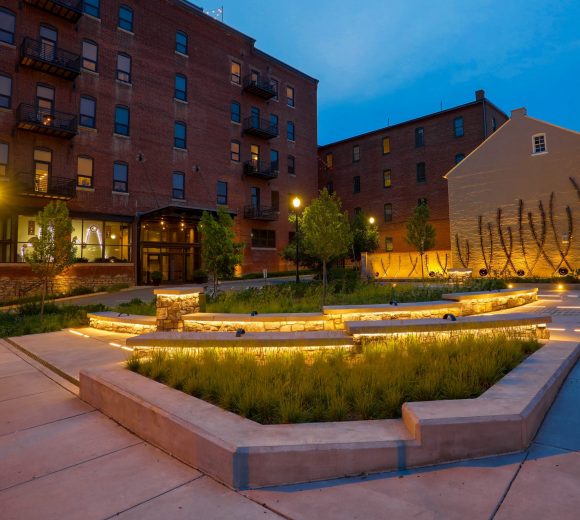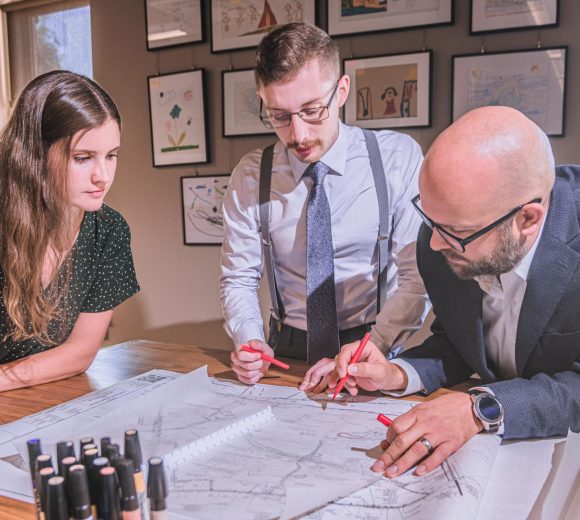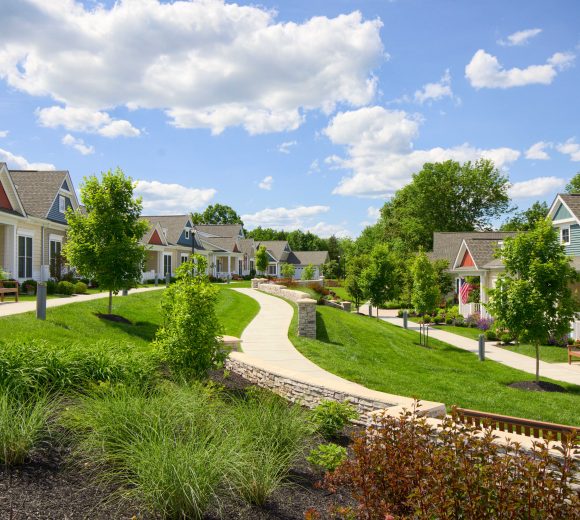Therapeutic Landscape Design Holds the Natural Power to Heal, Comfort, and Boost Our Happiness
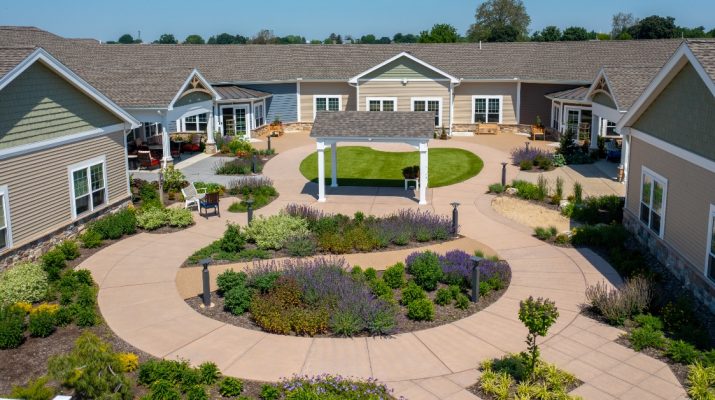
There is a deep-rooted connection between nature and human emotion. Fresh air, sunlight, shade in the hot summer sun, the sound and sight of water flowing through a creek; connecting with nature can clear our minds and make the weight of the world on our shoulders feel a little bit lighter.
For over a century, landscape architects have turned our emotional connection to nature into a science and, in the process, have figured out how to create calming, healing spaces – known today as therapeutic landscapes

“While most natural settings have the potential to heal, therapeutic landscapes are natural garden spaces designed to meet specific physical, psychological, social, and spiritual needs,” said Joe Lutz, registered Landscape Architect at RGS Associates.
Joe has studied landscape architecture and therapeutic landscape design throughout his career and, after his own experience with chronic pain and the power of natural settings to help him heal, he’s been designing therapeutic landscapes to help others receive the same benefits.
“The design of therapeutic landscapes begins with people,” Joe said. “We think first about the people who will be experiencing the space. Then we build the environment around them.”
Therapeutic gardens may bring calmness and comfort to a sick hospital patient. Or they may reduce the stress and anxiety felt by a busy professional on their way to work.
“Whatever the need, therapeutic gardens have the power to trigger positive emotions in people and improve the health, wellbeing, and happiness of those who enjoy them.
Connecting the Healing Power of Nature to the Built Environment
Every space we enter triggers an emotional response, whether we realize it or not. Effective designers must understand the influences that create our human reactions to spaces, then design those spaces to evoke the emotional reaction they want.
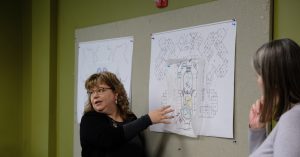 “A good designer is always working to figure out why people have the reactions to spaces that they do,” Joe said. “We’re students of human behavior just as much as landscape design.”
“A good designer is always working to figure out why people have the reactions to spaces that they do,” Joe said. “We’re students of human behavior just as much as landscape design.”
For RGS, evoking an emotional response to a landscape begins by tapping into our human senses. The feel and texture of leaves and the softness of a flower’s petals each create unique reactions. The smell of a flower in a garden, the movement of grasses, the sound of flowing water, the colors of plants and walkways; every aspect of the space is considered and strung together like the melody of a song.
“We also consider the palette we have to work with,” Joe said. “There may be a change of material such as a stone path meeting a mulched garden edge or a line of shrubs up against a small pond. Or a transition from a hard walking surface to a soft surface. The way the natural materials of the space come together also influence our emotional responses.”
Modern Therapeutic Outdoor Spaces Are a Relatively New Concept in the History of Landscape Architecture
We know intuitively that natural spaces that give us exposure to plants, trees, the sounds of nature, and sunlight, have significant health benefits. But decades ago, as technology advanced and brought improved outcomes and efficiencies to industries like healthcare, the sciences, and construction, the built environment became less about form and more about function. Doctor’s offices and hospitals, for example, were built as an efficient series of floors stacked one on top of the other with few windows, natural light, or connections to outdoor spaces.
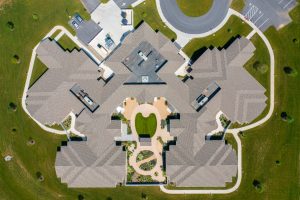 It wasn’t until the mid-1990’s that built environments saw a resurgence of therapeutic gardens – also called healing gardens. Society’s increased focus on health, diet, and exercise led architects to design outdoor gardens for senior living communities and healthcare facilities to make natural spaces more accessible for residents and patients.
It wasn’t until the mid-1990’s that built environments saw a resurgence of therapeutic gardens – also called healing gardens. Society’s increased focus on health, diet, and exercise led architects to design outdoor gardens for senior living communities and healthcare facilities to make natural spaces more accessible for residents and patients.
“In 1984, Roger Ulrich conducted his ‘view through a window’ study,” Joe explained. “He studied patient behavior and outcomes after surgery and observed that patients who had a view of the outdoors through their hospital room window required less pain medication, were in better moods, and went home sooner. Ulrich replicated his study over and over. He had clearly demonstrated a connection between the environment and human behavior.”
Since then, landscape architects have been working to better understand the benefits of therapeutic landscape design through the study of environmental psychology.
The theories of environmental psychology and its understanding of the connection between human behavior and natural landscapes are the roots beneath the soil of today’s therapeutic gardens. Landscape architects are using these theories to determine which garden design approach will create the emotional response the landscape is meant to evoke.
How Does a Landscape Architect Create a Therapeutic Landscape Design?
Ulrich not only demonstrated the direct role nature played in human behavior and wellbeing, but he also classified healing gardens as having four defining factors. Today’s landscape architects use these factors as a guiding light when designing any therapeutic garden space.
- A Sense of Control and Access to Privacy
People must have to access the therapeutic healing garden and have the ability to gather with others or find privacy in the space - Social Support Spaces
A therapeutic garden must provide space for two or more people to sit and spend time together - Physical Movement
It must provide walking paths and other means of moving throughout the space - Natural Distractions
It should feel like a garden where you can escape, rest, and reflect
Therapeutic Landscape Design for Healthcare
The principles of therapeutic landscape design remain constant. But the way those principles are applied to a project depends on the needs of the client and the audience each space is intended to serve.
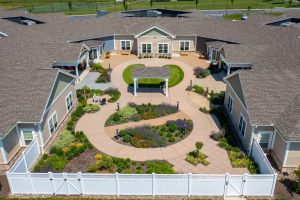 “Healthcare spaces are the perfect example,” Joe said. “Therapeutic gardens for healthcare facilities are often intended to comfort patients. That sense of comfort can be achieved by creating simple visual connections to the natural environment as well as through immersive garden spaces. Yet, even within the healthcare setting, you have a wide variety of patients and needs. Think of the difference between a pediatrician’s office seeing children for their annual check-ups versus a cancer center providing chemotherapy treatment.”
“Healthcare spaces are the perfect example,” Joe said. “Therapeutic gardens for healthcare facilities are often intended to comfort patients. That sense of comfort can be achieved by creating simple visual connections to the natural environment as well as through immersive garden spaces. Yet, even within the healthcare setting, you have a wide variety of patients and needs. Think of the difference between a pediatrician’s office seeing children for their annual check-ups versus a cancer center providing chemotherapy treatment.”
This is why it is important early in the design process to listen to staff, key stakeholders, patients, and families to understand their needs – is especially critical when designing for healthcare facilities.
When designing therapeutic gardens for healthcare, the designer should be focused on creating physical and emotional comfort. The designer should incorporate places to walk and sit and include a series of interconnected outdoor spaces. We also look for opportunities for patients to interact with nature, whether it be watching birds, listening to running water, or enjoying a scenic view.
Therapeutic Landscape Design for Senior Living
Just as with healthcare environments, therapeutic landscape design can provide incredible benefits for the health and wellbeing of seniors. With every senior living therapeutic garden, RGS focuses on four must-have features: a sense of control with opportunities to choose how you spend time in the garden, safety, security, and privacy.
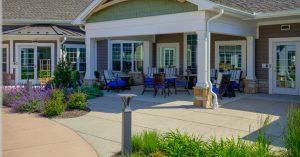 “Senior living facilities give us a lot of room to be creative and nostalgic,” Joe said. “For instance, we can research which flowers were most common in the community back when most residents were growing up or raising families. Then, we can incorporate those flowers into the design. That small detail can evoke a nostalgic experience for a resident and make their senior living community feel more like home.”
“Senior living facilities give us a lot of room to be creative and nostalgic,” Joe said. “For instance, we can research which flowers were most common in the community back when most residents were growing up or raising families. Then, we can incorporate those flowers into the design. That small detail can evoke a nostalgic experience for a resident and make their senior living community feel more like home.”
Therapeutic gardens also go beyond emotional wellbeing. RGS designs each retirement community garden to invite residents outside into the fresh air with a mix of sun and shade spaces, places to sit and talk with friends and family, and walking paths for exercise and social engagement.
“Comfort and a sense of freedom are common emotional responses we want to trigger when designing spaces for seniors,” Joe said. “Our team may add plants and flowers with round edges and soft petals in pale colors to create a sense of calm. We may also grade pathways to be flat and easily walkable so they’re safe for seniors.”
Therapeutic Landscape Design for Urban Communities
Therapeutic urban gardens can look and feel much different than gardens for private spaces. The gardens can be nestled among tall steel buildings with the sounds of traffic coming from all directions.
The task of creating a therapeutic space among the hustle and bustle of urban living can be a challenge. And yet, RGS utilizes the same principles and factors of therapeutic landscape design, no different than if they were designing a hospital garden. The difference comes down to the needs of the prospective users and the broader community.
“Therapeutic landscapes are important in urban settings where buildings can block sunlight and green space is limited,” Joe said.
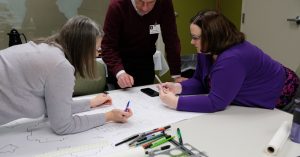 These landscapes are also important in city neighborhoods for families and children without big backyards.
These landscapes are also important in city neighborhoods for families and children without big backyards.
“Community residents need recreational areas,” Joe said. “Therapeutic gardens in cities can also serve as respite areas and parks for kids and families to spend time outside.”
In urban spaces where cities or municipalities, rather than private businesses, are responsible for garden upkeep, RGS uses low-maintenance plants and trees.
“We use native plants that attract birds and pollinators as much as possible,” Joe said. “We also try to use plants that are adaptable and can handle hot summer droughts as well as harsh winters.”
Creating Beautiful Therapeutic Landscapes that Improve Health and Wellbeing
By engaging therapeutic landscape design principles and tapping into nature’s influence over human emotions, landscape architects can create spaces that transform our mood, reduce stress, restore order, improve clinical outcomes in patients, and bring greater happiness to our lives.


